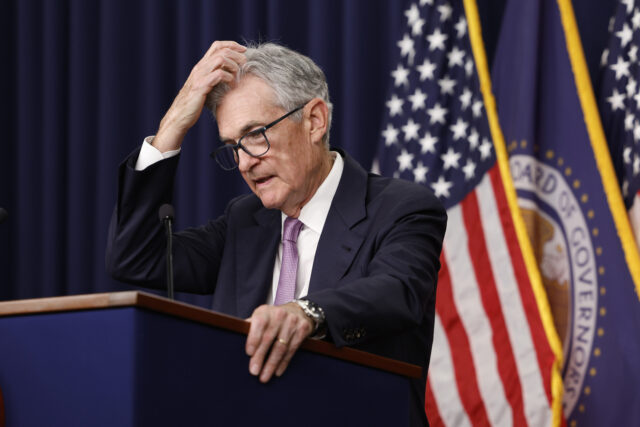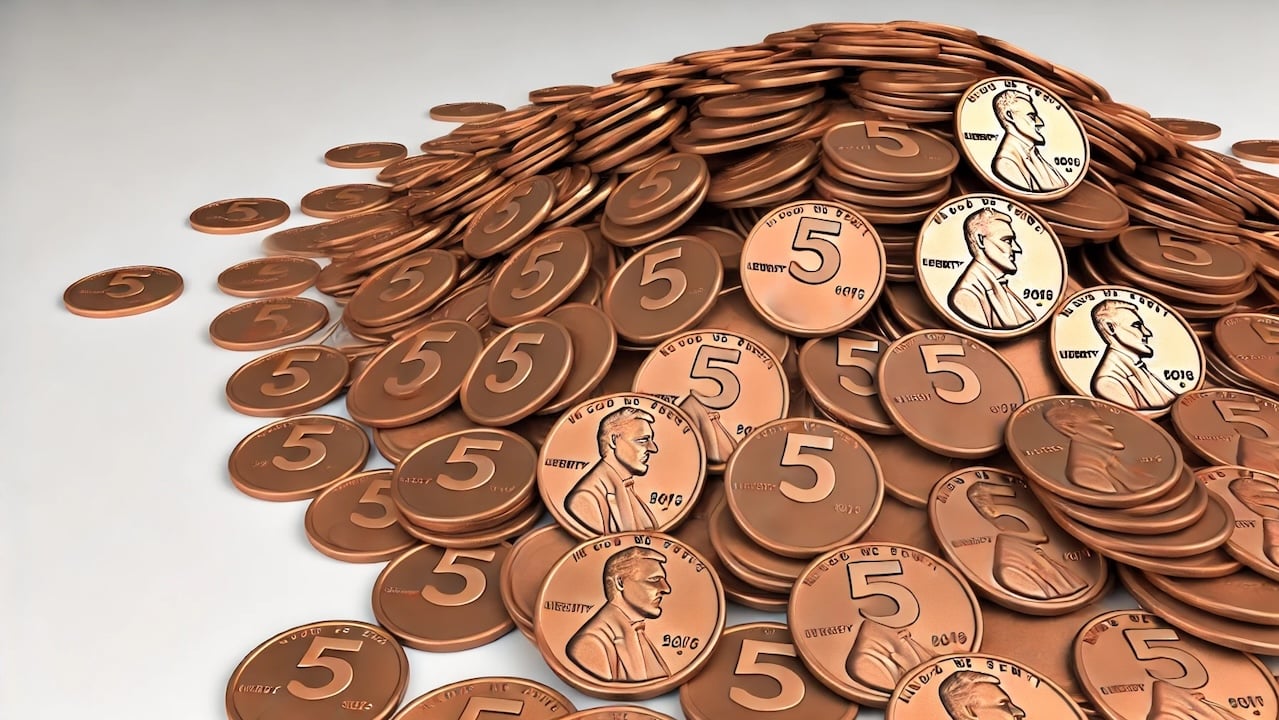from PragerU
Core Inflation Ticks Up to 2.7%, Stuck at High Level Since May
by John Carney
Breitbart.com
 A key measure of inflation appears to be stuck significantly higher than levels consistent with the Federal Reserve’s price stability goal.
A key measure of inflation appears to be stuck significantly higher than levels consistent with the Federal Reserve’s price stability goal.
The so-called core personal consumption expenditures (PCE) price index, which excludes food and energy prices, rose 0.1 percent from July, the Bureau of Economic Analysis said Friday. That was in-line with expectations and below the 0.2 percent increase in the prior month.
Compared with a year ago, core prices are up 2.7 percent, a bit higher than the 2.6 percent recorded last month. Before rounding, the change was even smaller: from 2.64941 percent to 2.67847 percent.
Trump and Harris On Food Prices: Promises vs. Reality
Both candidates have shared plans to lower food prices
by Rich Johnson
News Nation
 (NewsNation) — A long-held political truism has been that when the U.S. economy is going well, the president generally gets too much credit, and when things aren’t going well, the president gets too much blame.
(NewsNation) — A long-held political truism has been that when the U.S. economy is going well, the president generally gets too much credit, and when things aren’t going well, the president gets too much blame.
But that hasn’t stopped presidents and presidential candidates from claiming that their policies will quickly and effectively turn around bad times. And the 2024 presidential election is no exception.
Both former President Donald Trump and Vice President Kamala Harris have made promises and released proposals to improve the U.S. economy, especially when it comes to food prices. Here’s a look at some of their most prominent positions, and how experts view the chances of those stands becoming reality.
Fed Favored Annual Core PCE Price Index Accelerates to 2.7%, Highest Since April, On Higher Core Services Inflation (+3.8%). Durable Goods -2.2%, Energy -10%
by Wolf Richter
Wolf Street
 Housing costs jumped. Stubbornly high housing inflation has frustrated Powell for a long time.
Housing costs jumped. Stubbornly high housing inflation has frustrated Powell for a long time.
The “Core” PCE price index, the Fed’s primary yardstick for its 2% inflation target, rose by 2.7% from a year ago in August, the second slight acceleration in a row, and the biggest increase since April (red in the chart below). This “core” index attempts to show underlying inflation by excluding the components of food and energy as they can jump and drop with commodity prices.
The overall PCE price index, which includes the food and energy components, rose by 2.2% year-over-year in August, a deceleration, on plunging energy prices (-10.1%) and slower rising food prices (+1.1%).
Inflation Remained Below Target in August
by William J. Luther
The American Institute for Economic Research
 When the Federal Reserve’s Federal Open Market Committee (FOMC) voted to lower its federal funds rate target last week and thereby begin the process of un-tightening monetary policy, it said FOMC members had “gained greater confidence that inflation is moving sustainably toward 2 percent.” In fact, inflation appears to have already moved to 2 percent. If anything, inflation appears to be somewhat below target today.
When the Federal Reserve’s Federal Open Market Committee (FOMC) voted to lower its federal funds rate target last week and thereby begin the process of un-tightening monetary policy, it said FOMC members had “gained greater confidence that inflation is moving sustainably toward 2 percent.” In fact, inflation appears to have already moved to 2 percent. If anything, inflation appears to be somewhat below target today.
The Bureau of Economic Analysis (BEA) reports that the Personal Consumption Expenditures Price Index (PCEPI), which is the Fed’s preferred measure of inflation, grew at a continuously compounding annual rate of 2.2 percent over the last year. However, it has slowed considerably in recent months. PCEPI inflation has averaged 1.9 percent over the last six months and 1.4 percent over the last three months. In August 2024, it was just 1.1 percent.
The Real Inflation Rate? It’s a Mystery
by Martin Holzbauer
Terrace Standard
 To the editor:
To the editor:
How does the actual cost of living actually work in relation to the Consumer Price Index (CPI)?
Several things are part of that index such as food from almond butter to yogurt. Why are zucchinis missing?
For shelter costs, 25 items, including mortgage and insurance costs. There are about 100 items for household operations from accounting to wine glass sets. Clothing and footwear are included from baby stuff to youth snow pants and then there is transportation from air travel to used vehicle purchases, including, of course, gas costs.
Then we come to health and personal care products, recreation, education and
reading from ‘A’ as in admission to hockey games to ‘V’ as in video on demand. That section also includes alcohol, tobacco, cannabis and vaping products.
The Greed Theory of Inflation and the Cowardice of Economists
by David C. Rose
The American Institute for Economic Research
 The inflation outlook has improved, but it is still very much in the news. Although the rate of increase has slowed, prices remain more than 20 percent above what they were four years ago. At the same time, most analysts understand that the slow and at times negative growth of the money supply, which has tamed inflation somewhat for now, cannot be sustained.
The inflation outlook has improved, but it is still very much in the news. Although the rate of increase has slowed, prices remain more than 20 percent above what they were four years ago. At the same time, most analysts understand that the slow and at times negative growth of the money supply, which has tamed inflation somewhat for now, cannot be sustained.
Now that the Fed has announced its 50-basis-point cut in the federal funds rate, it will be opening the money spigot again. To be fair, the increase in the rate of growth of the money supply needed to achieve this reduction in the federal funds rate is modest. But as the Fed continues to reduce rates, the rate of money growth will increase, and so the likelihood of future inflation will rise. Since the Fed has given every indication that many more rate cuts are coming, what either presidential candidate has to say about inflation has never been more important.
Corporate Pricing Power and Therefore Inflation Not Vanquished, Says Renewed Spike in Corporate Profits in Most Industries
by Wolf Richter
Wolf Street
 More evidence that underlying inflation dynamics are thriving.
More evidence that underlying inflation dynamics are thriving.
How corporate profits spiked during the inflation-shock of 2021 and 2022 was amazing to watch: The pricing power companies suddenly had to hike prices and pump up profits because their customers were suddenly paying whatever, thereby propagating inflation across the economy. Then pricing power started fading, a mini lull ensued, and inflation backed off a lot. But now corporate profits have taken off again, and this renewed pricing power could be more bad news on the inflation front.
Harris and the Greed Theory of Inflation
by George Leef
National Review
 One of the very few pronouncements about policy by Kamala Harris was that she thinks the way to stop the inflation of prices for food (and presumably, other necessities) is federal price controls — empowering officials to go after companies that they deem guilty of price-gouging. The anti-market Left loved it.
One of the very few pronouncements about policy by Kamala Harris was that she thinks the way to stop the inflation of prices for food (and presumably, other necessities) is federal price controls — empowering officials to go after companies that they deem guilty of price-gouging. The anti-market Left loved it.
Top Stories
Catholic Schools Should Practice What They Are Supposed to Preach?
Eric Adams Accepted Bribes, Illegal Campaign Contributions, Newly Unsealed Indictment Says
Walz Education Appointee Calls for the Overthrow of the U.S.
Economists, however, understand that inflation is not caused by greed. In this AIER article, David Rose explains the truth to anyone willing to listen. Greed — the desire to maximize gains in business — is a constant. It cannot explain why prices sometimes surge and at other times remain level or even fall. Economists of all persuasions understand that. And Kamala Harris has some economics background. Does she believe the “greed” theory?
A Looming Port Strike Could Fuel Inflation and Cause Layoffs, Experts Say
Tens of thousands of dockworkers are set to strike as soon as Oct. 1.
by Max Zahn
ABC News
 Tens of thousands of dockworkers are set to strike as soon as Oct. 1, potentially snarling dozens of ports along the East and Gulf coasts with major implications for the U.S. economy.
Tens of thousands of dockworkers are set to strike as soon as Oct. 1, potentially snarling dozens of ports along the East and Gulf coasts with major implications for the U.S. economy.
A shutdown of the ports would cost the economy up to $4.5 billion each day, according to a report from JPMorgan senior equity analyst Brian Ossenbeck.
The East and Gulf Coast ports account for more than half of U.S. container imports, facilitating the transport of everything from toys to fresh fruit to nuclear reactors, Ossenbeck found.
A strike lasting only a handful of days would wreak little damage, but a prolonged work stoppage of several weeks or months could drive up prices for some goods and cause layoffs at manufacturers as raw materials dry up, experts said.
Chicago Fed President Goolsbee Wants to Declare Pennies Are Nickels
[Ed. Note: He also mentioned calling horses unicorns and embraced the concept of putting TBD on all new born birth certificates in the space for gender. How detached from reality is this idiot?]
by Mike Maharrey
Headline USA
 A recent comment by Chicago Federal Reserve President Austan Goolsbee gives you a glimpse into how Fed people think and helps to explain exactly why you’re paying more for everything.
A recent comment by Chicago Federal Reserve President Austan Goolsbee gives you a glimpse into how Fed people think and helps to explain exactly why you’re paying more for everything.
It’s almost as if inflating was hardwired into Fed members’ brains.
Goolsbee recently sat down with Illinois Treasurer Mike Frerichs during the National Association of State Treasurers conference in Chicago. In the course of the conversation, the subject of pennies came up.
There are a lot of people who think the U.S. Treasury should do away with the penny. This would make sense financially. It costs about 3 cents to mint the 1-cent coin.
“How stupid do you need to be to mint money at a loss?” Goolsbee asked.
